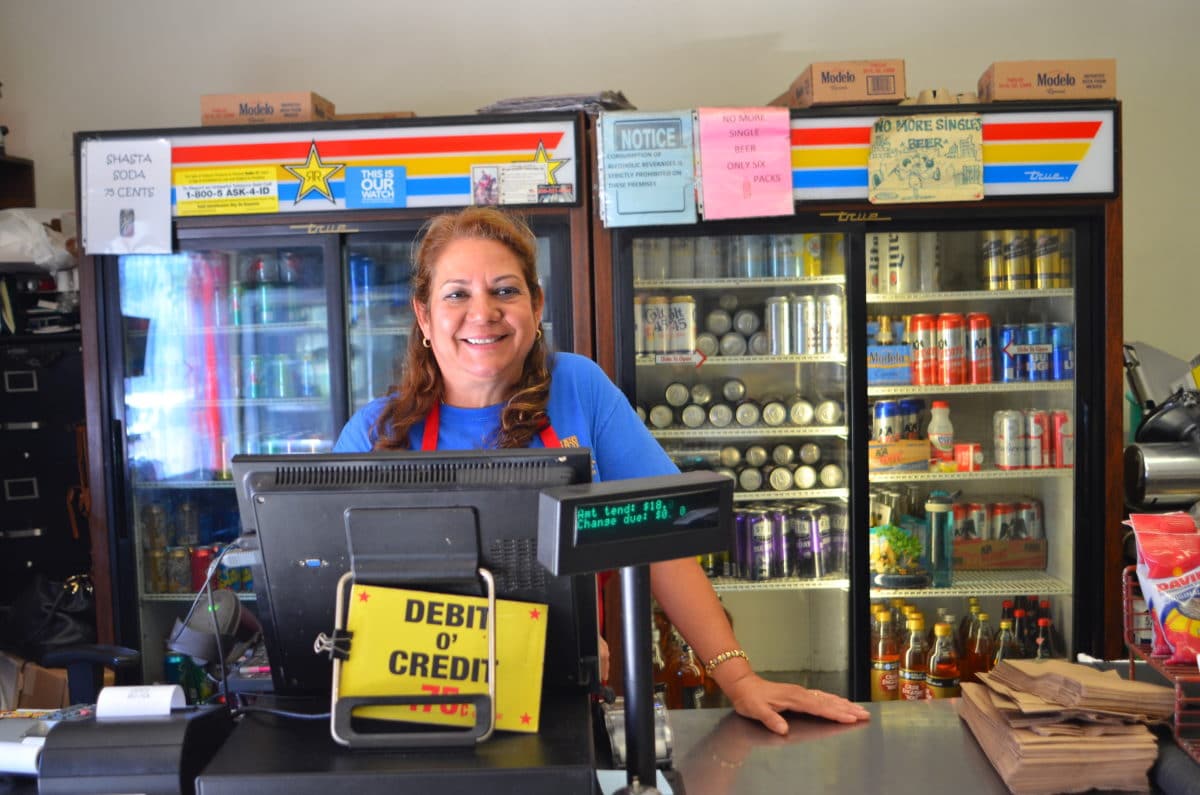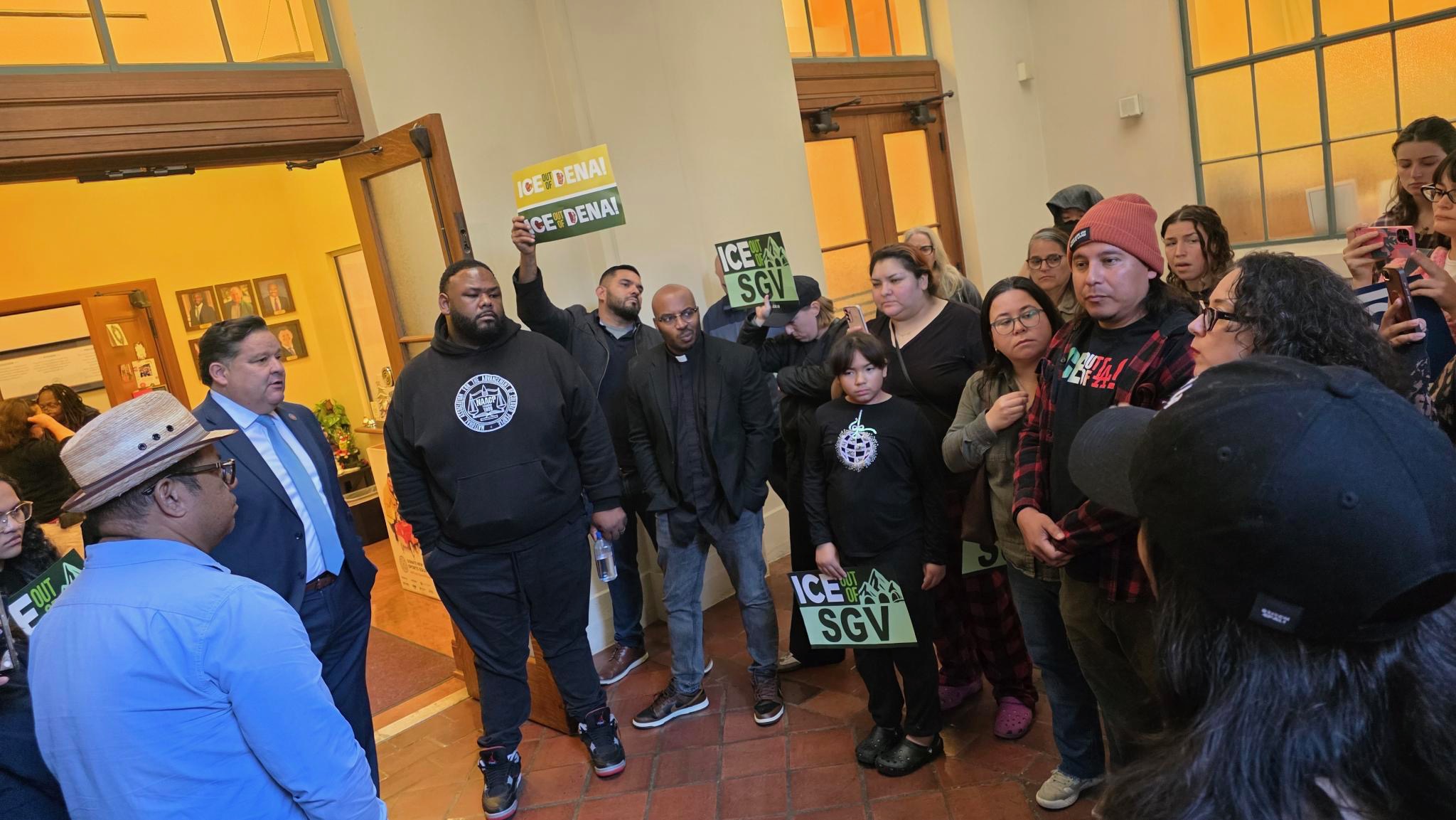[dropcap size=big]T[/dropcap]he downtown neighborhood known as Skid Row is a 50-block stretch bound by 3rd, 7th, Main, and Alameda Streets. Skid row is largely represented in the media as the epicenter of Los Angeles County’s homelessness epidemic, which it is. According to the Los Angeles Homeless Services Authority, nearly 3,000 people sleep out on the streets unsheltered every night. It’s the backdrop for countless editorials and articles about rats and refuse, drug use, violence, mental illness, and government mismanagement.
But it’s also a bonafide neighborhood of around 5,000 Angelenos, residing in single-room-occupancy hotels and market-rate apartments as well as the street. Much like any other neighborhood, its denizens get up every day and go in search of a morning cup of coffee, a Cuban sandwich at lunch, or shaved ice on a hot afternoon.
L.A. Taco spoke with five food entrepreneurs in the Skid Row neighborhood about their business models, their moms’ cooking, the best Cuban food in the city, and what can happen to make the neighborhood a better place to work, live, and eat.
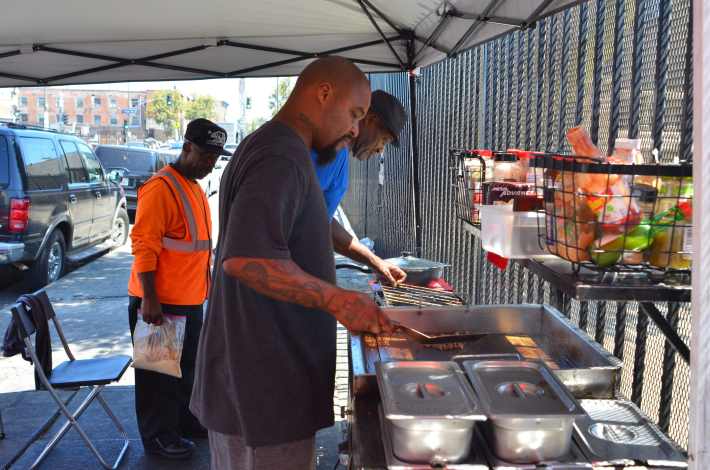
Solo, “We Love to Cook” soul food stand, 6th and Crocker
L.A. Taco: What’s on the menu?
Solo: We cook burgers, barbecue wings, tacos, and nachos.
What’s your most popular item?
Depends on the day, it’s always changing. Some days it’s a taco day and some days it’s a burger day.
Who are most of your clientele?
Sometimes people stop by, but most of the time it’s people who live down here.
What do you think is different about running a business over here on 5th street as opposed to in a different part of town?
Well a lot of times, restaurants will flop. When you’re a street vendor, you can always move. So, if it burns out right here, I can move. But I’ve been here for about a year and a half.
So business is good?
Yeah, well I love to cook. And a lot of people down here don’t have soul food. If people get a taco from one of these taco stands, it’s carne asada. Here, I use ground beef. It’s what blacks folks do, right here.
A lot of people come down here because they can’t afford a place to live, and then they get in more trouble just by being down here. Affordable housing is the most important thing.
Who taught you to cook?
My mom. My mom got sick one time. My uncle threw a party, and my dad was a rich guy, and someone tried to get him out of the game by giving him poison. My mom took the drink, and then she got poisoned. Long story short, I had to take care of my mom. She’d tell me to go get the pot, fill it up, make macaroni and cheese...I was probably only in fourth grade.
What do you think is the most important thing that has to change to make Skid Row a better place to live, work, and eat?
Affordable housing. If people can afford to have a place to live, then they never have to come down here in the first place. A lot of people come down here because they can’t afford a place to live, and then they get in more trouble just by being down here. Affordable housing is the most important thing.
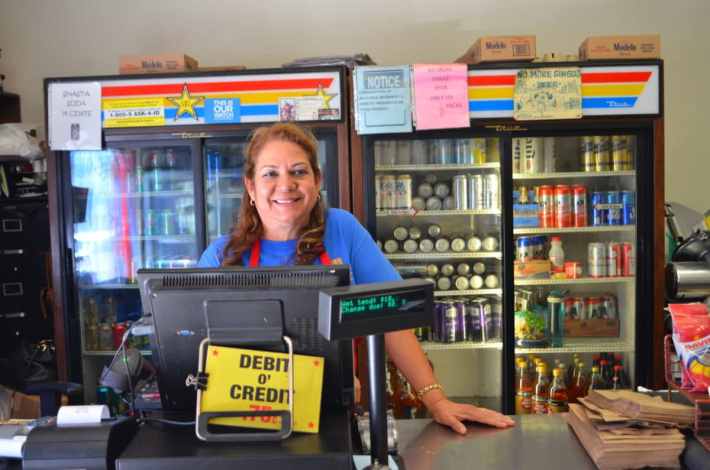
Irma Garcia, Martha’s Kitchen
How long has Martha’s Kitchen been open?
I have been here for 22 years. My brother owned the restaurant before me and he bought it from the original owners before that.
Who was Martha?
Martha was the original owner. She was Japanese, and my brother bought the restaurant from her. Martha’s daughters still own the building.
The first week of the month, [we serve] lots of homeless people. But money doesn’t last long around here.
What are your most popular menu items?
Definitely the breakfast burritos and breakfast sandwiches.
Do you have a big morning crowd?
Yes, busy mornings. We open at 4:45 AM on weekdays.
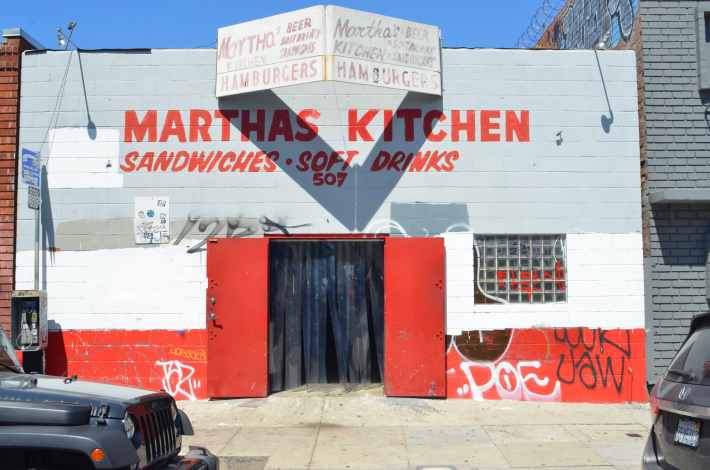
What’s your clientele like?
A lot of homeless people. The first week of the month, [we serve] lots of homeless people. But money doesn’t last long around here. Lots of truckers, and people who work around here, too.
How has the neighborhood changed since you started here 22 years ago?
Not a lot. But there are a lot more homeless. A lot of the jobs people did down here have moved to other cities. There are a lot more apartment buildings too. But a lot of the people who live in the new apartment buildings in Little Tokyo come down here, too.
Has your menu changed much over the years?
Since I started, a couple of things. I added grits, hot links. Menudo is new. We do menudo every day.
It seems like you have a lot of regulars.
Customers from 30 years to 40 years ago, from before I was here, they still come. The pastrami and the chili we make for the chili fries and chili beans are a homemade recipe. My brother got those recipes from the original owners. People who have moved away to other states still come and take some home with them. You see the same people over years and years, everyone knows me and I know them.
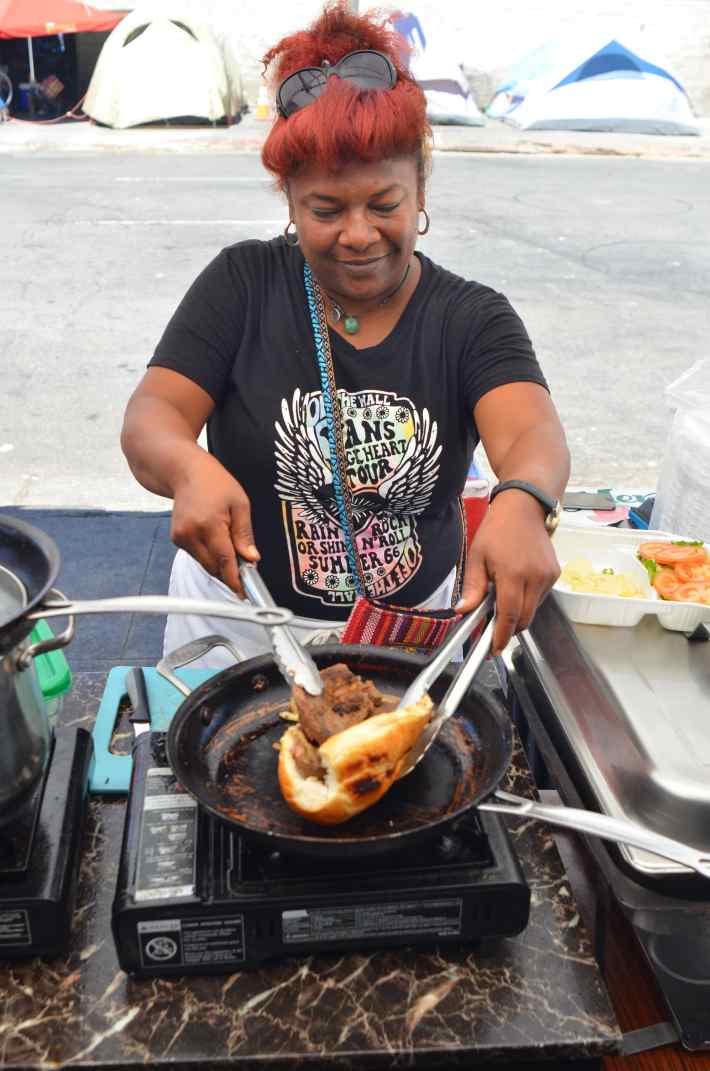
Nadiesca’s Cuban Sandwiches, 5th and San Julian
What are you cooking for lunch today, and what does it go for?
A beefsteak sandwich, with onions on it and chips, and a salad with tomato and lettuce. I sell the whole combo for ten dollars. I tell them, say no to drugs for a little while, and eat! You know? Because down here, you can find everything that’s not healthy.
Sometimes when I see people who really need it, who don’t have anything, I give a plate or two. I don’t do this for money. I have to have a little money, you know. But at the same time, this is what I love. I want to be my own chef.
What brought you to start this business down here?
I came here to find my mom. She came from Cuba in 1980. I came here to find her in 2000 after living in Europe with my first husband. She always comes down here, so I come to supervise a little and take care of her.
What kind of clientele do you have?
Sometimes truckers come and stop to get a sandwich. Mostly people who live here. Sometimes when I see people who really need it, who don’t have anything, I give a plate or two. I don’t do this for money. I have to have a little money, you know. But at the same time, this is what I love. I want to be my own chef.
Who taught you to cook?
My mom. She cooks beautifully. And I recently passed my culinary degree at LATCC.

Do people like Cuban food here a lot?
Yes. Sometimes, people have it for the first time. When they smell it, they come. My dream is to have my own Cuban restaurant in Hollywood, where I live.
You take a sick person from here and send them to jail, and they come out, and they end up right back here!
What do you think is the best Cuban restaurant in Los Angeles, besides this one, obviously?
For me, Versailles. And Colmao! Oh, super good!
What do you think is the most important thing that can be done to make Skid Row a better place to live, work, and eat?
Patience. Because there are sick people here. You take a sick person from here and send them to jail, and they come out, and they end up right back here! Also, more humanismo, humanity? Human rights. Sometimes the police come here and assume the majority of people here are criminals, so they don’t follow the rules. Sometimes they abuse their power. There are criminals, of course, but they are human people. You can do your job, but no abuse, please. Don’t abuse my people, you know!?
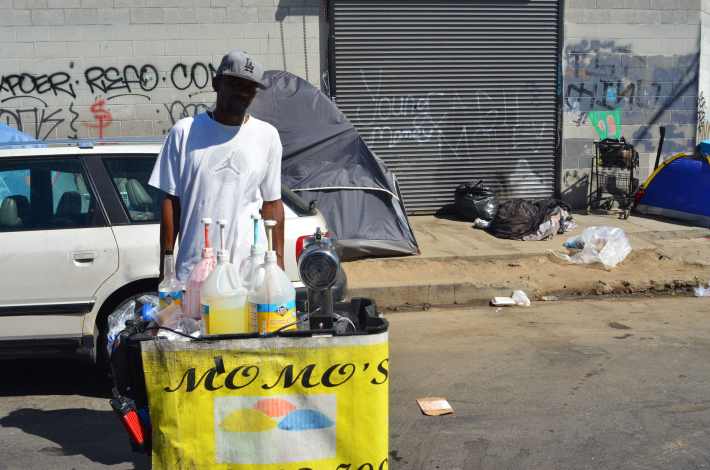
Juan, Momo’s Shaved Ice, Roaming Street Vendor
How long have you been running this business?
Six years.
Always around here?
No. I started [in a different part of] downtown, but nobody was buying. Then I came down here to Skid Row and I’ve been doing good ever since. I bought myself a Range Rover, and I only work four and a half hours a day!
It’s all about respect. You just treat everyone the same, everyone with respect, take care of people, and when they get their money they’ll come to take care of you.
What’s the menu?
Shaved ice. $2 for a small, $3 for a large, $5 for two large [cups].
What’s your most popular flavor?
Definitely The Incredible Hulk—that's blue raspberry and lemon with a shot of pineapple, mixed together.
What’s unique about running a business here on Skid Row?
It’s all about respect. You just treat everyone the same, everyone with respect, take care of people, and when they get their money they’ll come to take care of you.
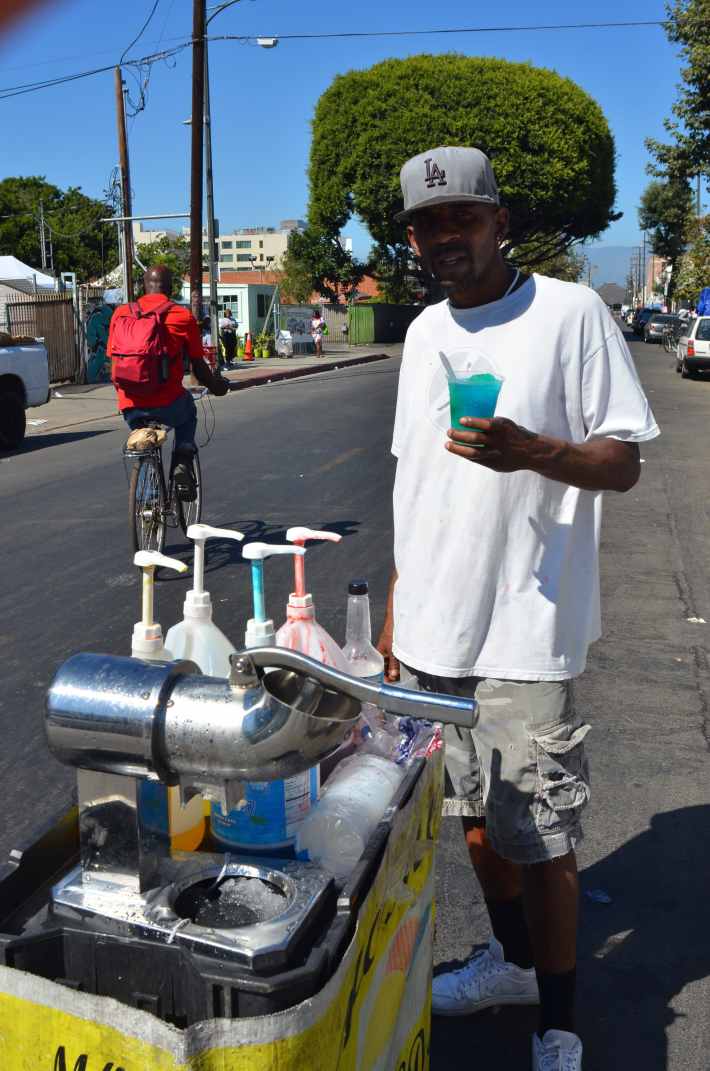
It’s hot right now. You must do pretty well in the Summer.
Yeah, summer’s good.
Do you like to cook? Did you have any other food businesses before this?
No, I’m just an entrepreneur. I do income tax in the winter.

Danny Park, Skid Row People’s Market, 5th and San Pedro
After 25 years as Best Market, you reopened the family business as The Skid Row People’s Market in February. How’s business been since then?
Business is good. We’re here on 5th and San Pedro which is a super busy intersection. So there’s a lot of traffic. The location being one of the factors. There’s a lot of people who come through this door. I would say our customer base is the skid row community. People who live in the Brownstone above us, people who live in the apartments or the SROs nearby, and people who work here. That’s our regular customer base, I’d say.
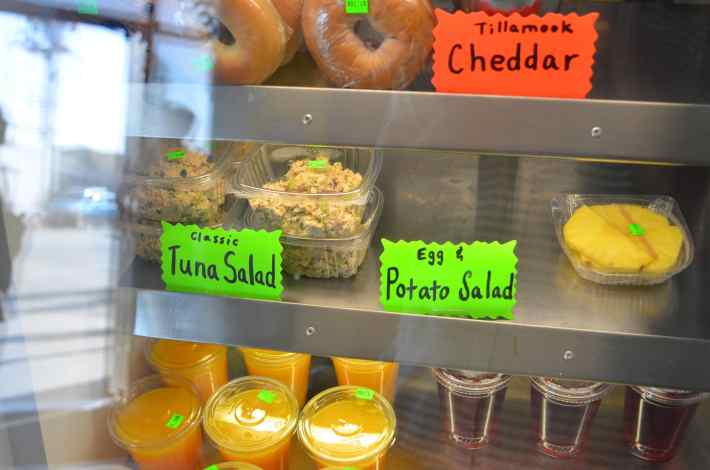
Does this corner look different than it did when you were growing up?
Well, there are definitely a lot more people, a lot more tents on the streets. This one building to the side of us is converting to market-rate lofts with first floor retail, all that. Just walking around the perimeter of the skid row neighborhood, you see the apartments going up.
Everyone who works here has skills in de-escalation, and a lot of work is violence prevention as well, so that might make us a little different from other markets, how we operate as a public space. We love the people here, so we do everything in our power to take care of them.
You've introduced some fresh produce and deli items since reopening. You’ve got potatoes and avocados and tomatoes here. In the deli case, there’s potato salad, kimchi, and cut fruit. What items have been a hit?
Well, Kimchi has been a hit. We sell it for 2.99 for about three hundred grams. As for produce, everything we have goes. Cut watermelon is definitely popular.
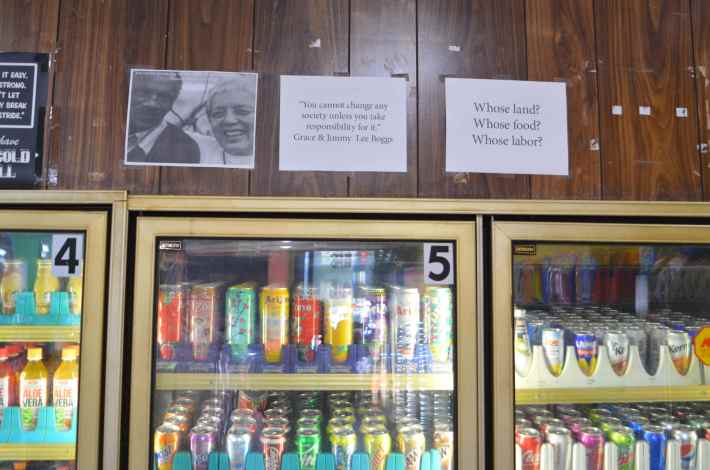
Do you think you’ve introduced Kimchi into some people’s diets?
I think a lot of people know it, eat it, and like it. But I think having it here introduces it to a lot of people as well.
When you stock the shelves here, do you have an eye towards items that are accessible to people who are unhoused?
Yes, absolutely. A lot of people are unhoused, a lot of people don’t have access to a kitchen or cooking facility, and we know that. So what we’ve been trying to do is create a system for us where we can have more low-cost, prepackaged fresh food ready for people to eat. A lot of people don’t have pantries or places to store stuff, so we definitely keep that in mind.
What’s different about running a corner store on this corner than in a different part of the city? Everyone who works here has skills in de-escalation, and a lot of work is violence prevention as well, so that might make us a little different from other markets, how we operate as a public space. We love the people here, so we do everything in our power to take care of them.
-
It’s no secret that homelessness in Los Angeles has soared in the last five years, deeply impacting our city and daily lives. While solutions for the homeless epidemic are still up in the air, one thing is certain: we won’t solve the problem without working together. This is why L.A. Taco and Los Angeleno have partnered to share untold stories behind these issues in a month-long series that both shines a light on covert ugly actions from our fellow Angelenos and gives a voice to the voiceless.
Los Angeleno
Surviving for Two: Pregnant and Homeless in L.A.
As Homelessness Surges, Volunteers Work to Keep Pets and Their Owners Together
From Haircuts to Skill-Building Workshops, ProjectQ Fills in the Gaps for Homeless LGBTQ Teens
L.A. Taco
Are Vigilante Groups on Facebook to Blame for the Spike in Violence Against the Homeless?
